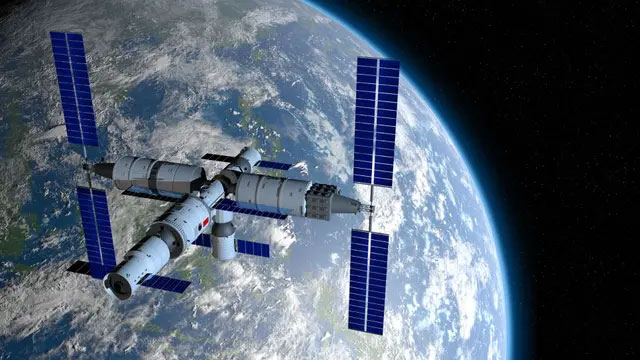World’s most powerful spy camera sees Chinese scientists redefine global standards for surveillance
The camera could potentially enable Beijing to scrutinize foreign military satellites – or even identify human faces from a low orbit

Chinese scientists have made a huge technical advancement in optical imaging technology, developing a powerful laser that could overhaul the global surveillance industry.
The tech has the potential to enable China to observe foreign military satellites with unrivaled precision or even capture details as fine as a human face from low-Earth orbit.
A team from the Chinese Academy of Sciences’ Aerospace Information Research Institute managed to capture images with the camera, with millimeter-level resolution from distances exceeding 62 miles / 100 kilometers – previously thought impossible.
The breakthrough was described in a study published last week in the peer-reviewed Chinese Journal of Lasers.
The discovery was made during a trial of the camera across Qinghai Lake in China’s northwest. Researchers deployed the groundbreaking synthetic aperture LiDAR system – a type of laser-based imaging system with a wide field of vision.
Positioned on the lake’s northern shore, the camera targeted arrays of reflective prisms placed 101.8 km away, benefiting from conditions with high visibility, minimal cloud cover and steady winds.
The system detected details as small as 1.7mm / 0.07 inches and measured distances with an accuracy of 15.6mm / 0.61 inches – a performance 100 times better than the current best spy cameras, and the best telescopes relying on traditional lenses.
Get the Digital Camera World Newsletter
The best camera deals, reviews, product advice, and unmissable photography news, direct to your inbox!
The scientists employed several technological innovations to achieve this landmark technological advancement. By splitting the laser beam across a 4x4 micro-lens array, they expanded the system’s optical aperture from 17.2mm / 0.68 inches to 68.8mm / 2.71 inches, overcoming the usual tradeoff between aperture size and field of vision.
They also used a specialized laser module to send signals with frequencies beyond 10 gigahertz. This provided fine range resolution, facilitating precise distance measurements. At the same time, a narrow color spectrum was maintained to enhance azimuth resolution, which improves horizontal detail detection.
The new system is built on microwave synthetic aperture radar principles, but operates at optical wavelengths, delivering far sharper images than radar-based alternatives. It also outperforms previous long-range imaging attempts; 2011, for example, US defense contractor Lockheed Martin reached a 7.87 inch / 200mm azimuth resolution from 1 mile / 1.6 km.
The technology marks a huge shift in how satellites – and objects on Earth – can be monitored.
You might also like…
Why not take a look at our guides to the best spy cameras, the best camera drones, and the best body cameras.

After graduating from Cardiff University with an Master's Degree in Journalism, Media and Communications Leonie developed a love of photography after taking a year out to travel around the world.
While visiting countries such as Mongolia, Kazakhstan, Bangladesh and Ukraine with her trusty Nikon, Leonie learned how to capture the beauty of these inspiring places, and her photography has accompanied her various freelance travel features.
As well as travel photography Leonie also has a passion for wildlife photography both in the UK and abroad.
You must confirm your public display name before commenting
Please logout and then login again, you will then be prompted to enter your display name.
